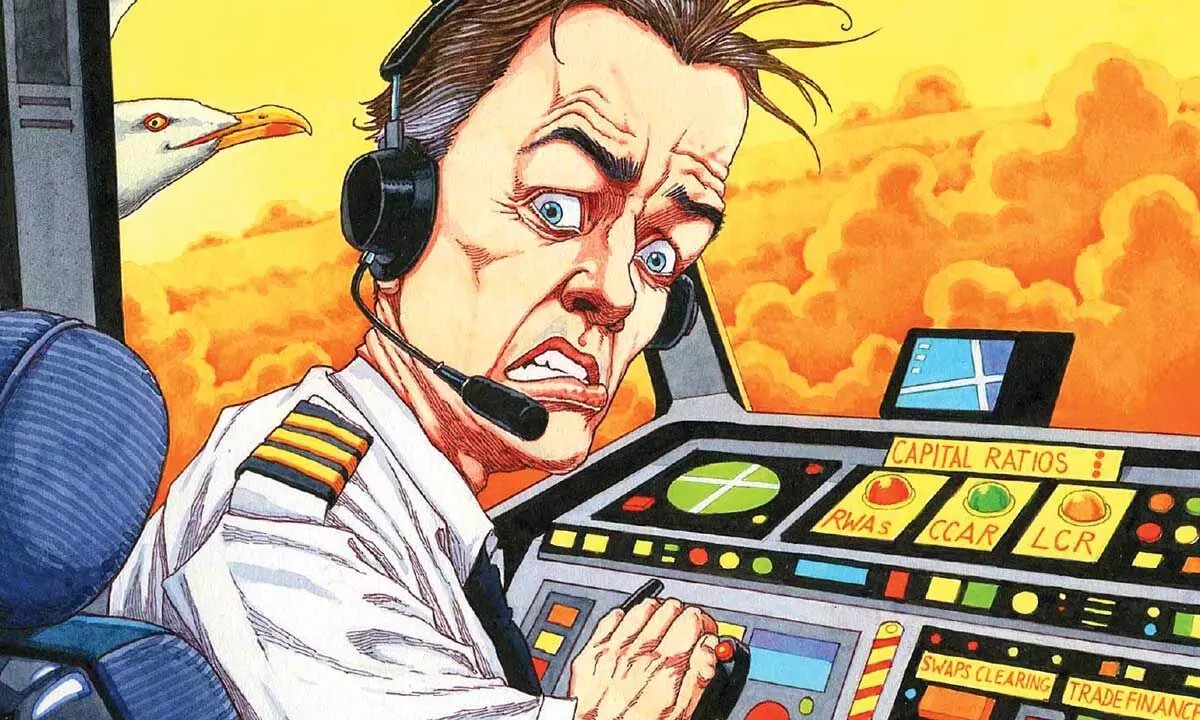Pilot fatigue plagues aviation sector

Pilot fatigue plagues aviation sector
Due to the increasing demand for air travel the services has to run 24 hours 7 days basis in the whole year making the employees working in the aviation services to perform long duty days, circadian disruptions from night flying or time zone changes scheduling change, work under pressure in dynamic environments causing them to bear higher stress level
Air travel has increased and airlines try to achieve unit cost savings by increasing the aircraft and labour utilisation. This has resulted in heavier workloads and increased hours of duties for pilots and crew. Therefore, there is a discernible pattern of higher probability of an accident. Despite regulators and industry efforts and with air traffic steadily growing, accidents do happen. Many of the aviation disaster lead to high mortality and substantially elevated levels of airline share price volatility. The number of fatigue related safety incidents has grown, with crew sighting fatigue and sleep loss as the causation of operational errors such as landing on incorrect runways or fuel miscalculations.
Fatigue poses an important safety risk to civil and military aviation. In addition to decreasing performance in-flight (chronic) fatigue has negative long-term health effects. Possible causes of fatigue include sleep loss, extended time awake, circadian phase irregularities and work load. Despite regulations limiting flight time and enabling optimal rostering, fatigue cannot be prevented completely. Especially in military operations, where limits may be extended due to operational necessities, it is impossible to rely solely on regulations to prevent fatigue.
The airline industry and the government agency that regulates it, the Federal Aviation Administration, have taken steps to reduce pilot fatigue, but many pilots and others remain worried that two pilots are required to remain awake and alert for the entire flight, though one or both may be dealing with symptoms of fatigue.
According to the US Federal Aviation Authority, fatigue can be defined as a "condition characterized by increased discomfort with and lessened capacity for work, reduced work efficiency, loss of energy or capacity to respond to stimulation, and is usually accompanied by a feeling of weariness and tiredness."
Due to the increasing demand for air travel the services has to run 24 hours 7 days basis in the whole year making the employees working in the aviation services to perform long duty days, circadian disruptions from night flying or time zone changes scheduling change, work under pressure in dynamic environments causing them to bear higher stress level.
This rarity of accidents is a testament to technological progress, especially improvements in airframe construction, propulsion mechanics, and avionics design. The highly automated nature of flying today means aircraft flown by weary pilots will almost certainly still reach their destinations safely.
As the commercial aviation industry navigates an uneven global recovery from the recent market downturn caused by Covid-19, effective training and an adequate supply of personnel remain critical to maintaining the health, safety and prosperity of the aviation ecosystem.
According to Boeing Pilot Outlook 2022-2041, long-term demand for newly qualified aviation personnel remains strong, as 602,000 new pilots, 610,000 new maintenance technicians and 899,000 new cabin crew members will be needed to fly and maintain the global commercial fleet over the next 20 years.
Meeting projected pilot, aircraft technician and cabin crew demand is wholly dependent on industry's investment in a steady pipeline of newly qualified personnel to replace those who have left or will soon leave the industry through retirement, recent layoffs and furloughs, and ongoing attrition. The global aviation industry will need to keep a sharp focus and engage in collective efforts to build a robust, diverse talent pipeline through more educational outreach and recruitment programs, development of new pathways to aviation careers, investment in early-career learning opportunities, and deployment and adoption of more efficient learning methods. Opportunity for those aspiring to have an aviation career will abound while operators will face stiff competition in recruiting and retaining top tier talent.
Those in this industry who emerge from market downturns have historically resumed their growth trajectory through collaboration, adaptation, and innovation. To address challenges created during the Covid-19 pandemic, the training industry is adopting increasingly innovative solutions. Many training providers have transitioned their offerings to online and virtual formats, where possible, allowing students to continue their learning safely and remotely. Immersive technologies, adaptive learning and flexible distance learning methods have allowed the training pipeline to remain intact while evolving how training is delivered. Continued investments in these technologies will likely lead to a long-term fundamental shift in how training is conducted.
Training methodologies also continue to progress toward a holistic approach that focuses on competencies rather than prescriptive tasks. As commercial operators and training providers look toward the future, we expect to see continued investments in artificial intelligence, machine learning, and mixed reality technologies that will help tomorrow's students learn more quickly, efficiently, and effectively. This will lead to a better, safer, and more efficient aviation industry.














